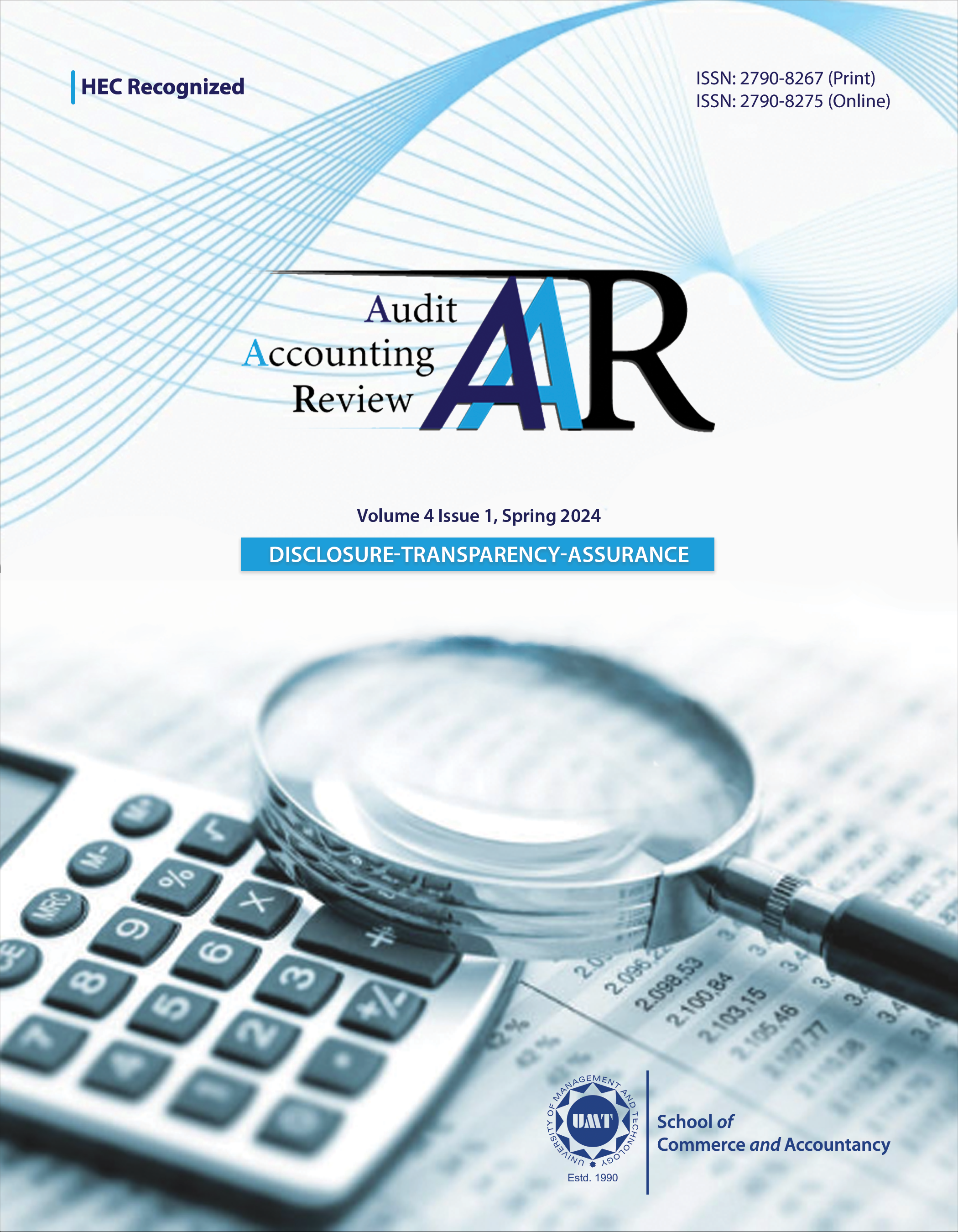Conditional Multifactor Assets Pricing Model: An Empirical Analysis of Anomalies in the State Space Framework
Abstract
 Abstract Views: 0
Abstract Views: 0
Factor pricing models are commonly used to assess portfolio risk and predict returns. Factor pricing models are commonly used to assess portfolio risk and predict returns. These models establish a connection between portfolio risk and a set of common factors, which may each have multiple dimensions. The effectiveness of a factor model depends on the selection of risk factors and their perceived sensitivity. In this paper, a Kalman filter-based conditional multifactor price model is employed to examine the influence of fundamentals and macroeconomics on industry portfolios. The approach taken in this study differs from the existing literature in the sense that the time-varying sensitivity of each factor is treated as a series of random processes. In a cross-sectional setting, a sector-based factor model can be used to reduce the possibility of measurement error caused by uncontrolled variables, in particular factor sensitivities. The empirical analysis demonstrates that, with the exception of the travel and leisure industry, the market factor has a substantial impact on the returns of most industries. On the other hand, fundamental components showed statistical significance at 1%, 5%, and 10% levels in explaining sector returns across all industries. The results underline the everlasting significance of fundamental variables across all sectors and the central role of the market factor in generating profits for most enterprises.
Downloads
References
Al-Rjoub, S. A. (August 25, 2009). Business cycles, financial crises, and stock volatility in Jordan stock exchange. Social Science Research Network, Article e1461819. http://dx.doi.org/10.2139/ssrn.1461819
Anuno, F., Madaleno, M., & Vieira, E. (2023). Using the capital asset pricing model and the fama–french three-factor and five-factor models to manage stock and bond portfolios: Evidence from Timor-Leste. Journal of Risk and Financial Management, 16(11), Article e480. https://doi.org/10.3390/jrfm16110480
Arista, D., & Astohar, A. (2012). Analisis faktor–faktor yang mempengaruhi return saham [Analysis of factors affecting stock returns]. Jurnal Ilmu Manajemen dan Akuntansi Terapan, 3(1), 1–15.
Arouri, M., Lahiani, A., & Nguyen, D. K. (2015). World gold prices and stock returns in China: Insights from a nonlinear causality test. Economic Modelling, 44, 270–279. https://doi.org/10.1016/j.econmod.2014.10.030
Athari, S. A., Kirikkaleli, D., & Adebayo, T. S. (2023). World pandemic uncertainty and German stock market: Evidence from Markov regime-switching and Fourier based approaches. Quality & Quantity, 57(2), 1923–1936. https://doi.org/10.1007/s11135-022-01435-4
Banz, R. W. (1981). The relationship between return and market value of common stocks. Journal of Financial Economics, 9(1), 3–18. https://doi.org/10.1016/0304-405X(81)90018-0
Basu, S. (1977). Investment performance of common stocks in relation to their price-earnings ratios: A test of the efficient market hypothesis. The Journal of Finance, 32(3), 663–682. https://doi.org/10.1111/j.1540-6261.1977.tb01979.x
Benaković, D., & Posedel, P. (2010). Do macroeconomic factors matter for stock returns? Evidence from estimating a multifactor model on the Croatian market. Business Systems Research: International Journal of the Society for Advancing Innovation and Research in Economy, 1(1-2), 39–46.
Bessler, W., & Schmidt, R. H. (2022). Empirical capital market research in Germany. In W. Matiaske & D. Sadowski (Eds.), Ideengeschichte der BWL II: Produktion, OR, innovation, marketing, finanzierung, nachhaltigkeit, ÖBWL, internationales management (pp. 271–306). Springer Gabler. https://doi.org/10.1007/978-3-658-35155-7_11
Bhandari, L. C. (1988). Debt/equity ratio and expected common stock returns: Empirical evidence. The Journal of Finance, 43(2), 507–528. https://doi.org/10.1111/j.1540-6261.1988.tb03952.x
Bhatti, M. R., & Khan, A. A. (2022). A comparative test of multifactor asset pricing models in the dynamic regimes of financial Crisis: Evidence from emerging market regions Asia, EMEA, and Americas. Journal of Positive School Psychology, 6(5), 8985–8997.
Carhart, M. M. (1997). On persistence in mutual fund performance. The Journal of Finance, 52(1), 57–82. https://doi.org/10.1111/j.1540-6261.1997.tb03808.x
Chan, K., Chen, N. F., & Hsieh, D. A. (1991). An exploratory investigation of the firm size effect. Journal of Financial Economics, 30(2), 195–226. https://doi.org/10.1016/0304-405X(85)90008-X
Chen, J., Jiang, F., Xue, S., & Yao, J. (2019). The world predictive power of US equity market skewness risk. Journal of International Money and Finance, 96, 210–227. https://doi.org/10.1016/j.jimonfin.2019.05.003
Chen, N.-F., Roll, R., & Ross, S. A. (1986). Economic forces and the stock market. The Journal of Business, 59(3), 383–403. https://doi.org/10.1086/296344
Chen, S., & Ranciere, R. (2019). Financial information and macroeconomic forecasts. International Journal of Forecasting, 35(3), 1160–1174. https://doi.org/10.1016/j.ijforecast.2019.03.005
Cheung, Y. L., & Wong, K. T. (1992). An assessment of risk and return: Some empirical findings from the Hong Kong stock exchange. Applied Financial Economics, 2(2), 105–114. https://doi.org/10.1080/758536014
DeBondt, W. F., & Thaler, R. (1985). Does the stock market overreact? The Journal of Finance, 40(3), 793–805. https://doi.org/10.1111/j.1540-6261.1985.tb05004.x
DeBondt, W. F., & Thaler, R. (1987). Further evidence on investor overreaction and stock market seasonality. The Journal of Finance, 42(3), 557–581. https://doi.org/10.1111/j.1540-6261.1987.tb04569.x
El-Diftar, D. (2023). The impact of exchange rates on stock market performance of the Emerging 7. Journal of Capital Markets Studies, 7(2), 125–139. https://doi.org/10.1108/JCMS-03-2023-0005
Fama, E. F., & French, K. R. (1993). Common risk factors in the returns on stocks and bonds. Journal of Financial Economics, 33(1), 3–56. https://doi.org/10.1016/0304-405X(93)90023-5
Fama, E. F., & French, K. R. (1995). Size and book-to-market factors in earnings and returns. Journal of Finance, 50(1), 131–155. https://doi.org/10.1111/j.1540-6261.1995.tb05169.x
Forbes, K. J., & Warnock, F. E. (2012). Capital flow waves: Surges, stops, flight, and retrenchment. Journal of International Economics, 88(2), 235–251. https://doi.org/10.1016/j.jinteco.2012.03.006
Grundy, B. D., & Martin, J. S. M. (2001). Understanding the nature of the risks and the source of the rewards to momentum investing. The Review of Financial Studies, 14(1), 29–78. https://doi.org/10.1093/rfs/14.1.29
Gunardi, N., & Disman, M. S. (2023). The effect of money supply and interest rate on stock price. Journal of Survey in Fisheries Sciences, 10(4S), 100–111. https://doi.org/10.17762/sfs.v10i4S.659
Haq, R. (2016, October 7). Haq's musings. https://www.riazhaq.com/2016/10/china-pakistan-corridor-to-add-over-2.html
Hawaldar, I. T., Mathukutti, R., Lokesh, L., & Sarea, A. (2020). Causal nexus between the anomalies in the crude oil price and stock market. International Journal of Energy Economics and Policy, 10(3), 233–238. http://dx.doi.org/10.2139/ssrn.3556135
Hepenstrick, C., & Marcellino, M. (2019). Forecasting gross domestic product growth with large unbalanced data sets: The mixed frequency three‐pass regression filter. Journal of the Royal Statistical Society: Series A: Statistics in Society, 182(1), 69–99. https://doi.org/10.1111/rssa.12363
Hsing, Y. (2011). The stock market and macroeconomic variables in a BRICS country and policy implications. International Journal of Economics and Financial Issues, 1(1), 12–18.
Jardet, C., & Meunier, B. (2022). Nowcasting world GDP growth with high‐frequency data. Journal of Forecasting, 41(6), 1181–1200. https://doi.org/10.1002/for.2858
Jegadeesh, N. (1990). Evidence of predictable behavior of security returns. The Journal of Finance, 45(3), 881–898. https://doi.org/10.1111/j.1540-6261.1990.tb05110.x
Jegadeesh, N., & Titman, S. (1993). Returns to buying winners and selling losers: Implications for stock market efficiency. The Journal of Finance, 48(1), 65–91. https://doi.org/10.1111/j.1540-6261.1993.tb04702.x
Jones, C. M., & Kaul, G. (1996). Oil and the stock markets. The Journal of Finance, 51(2), 463–491. https://doi.org/10.1111/j.1540-6261.1996.tb02691.x
Kaczmarek, T., & Perez, K. (2022). Building portfolios based on machine learning predictions. Economic Research - Ekonomska Istraživanja, 35(1), 19–37. https://doi.org/10.1080/1331677X.2021.1875865
Khalid, R., & Shehzad, C. T. (2021). Crude oil prices, financial stability, and stock market crashes: Evidence from MENA Countries. Pakistan Journal of Commerce and Social Sciences, 15(4), 736–764.
Kostin, K. B., Runge, P., & Charifzadeh, M. (2022). An analysis and comparison of multi-factor asset pricing model performance during pandemic situations in developed and emerging markets. Mathematics, 10(1), Article e142. https://doi.org/10.3390/math10010142
Lakonishok, J., Shleifer, A., & Vishny, R. W. (1994). Contrarian investment, extrapolation, and risk. The Journal of Finance, 49(5), 1541–1578. https://doi.org/10.1111/j.1540-6261.1994.tb04772.x
Lan, C. (2020). Stock price movements: Business-cycle and low-frequency perspectives. The Review of Asset Pricing Studies, 10(2), 335–395. https://doi.org/10.1093/rapstu/raaa002
Maysami, R. C., & Koh, T. S. (2000). A vector error correction model of the Singapore stock market. International Review of Economics & Finance, 9(1), 79–96. https://doi.org/10.1016/S1059-0560(99)00042-8
Miss, S., Charifzadeh, M., & Herberger, T. A. (2020). Revisiting the monday effect: A replication study for the German stock market. Management Review Quarterly, 70(2), 257–273. https://doi.org/10.1007/s11301-019-00167-4
Mufti, F. (2016, December 30). PSX emerges as Asia’s best-performing market in 2016. The Express Tribune. https://tribune.com.pk/story/1279831/year-2016-psx-emerges-asias-bestperforming-market/
Mundi, H. S. (2023). Risk neutral variances to compute expected returns using data from S&P BSE 100 firms: A replication study. Management Review Quarterly, 73(1), 215–230. https://doi.org/10.1007/s11301-021-00236-7
Natoli, F., & Venditti, F. (2022). The role of financial and macroeoconomic conditions in forecasting recession. Social Science Research Network, Article e4176581. http://dx.doi.org/10.2139/ssrn.4176581
Tursoy, T., Gunsel, N., & Rjoub, H. (2008). Macroeconomic factors, the APT and the Istanbul stock market. International Research Journal of Finance and Economics, 22(9), 49–57.
Verma, R. K., & Bansal, R. (2021). Impact of macroeconomic variables on the performance of stock exchange: A systematic review. International Journal of Emerging Markets, 16(7), 1291–1329. https://doi.org/10.1108/IJOEM-11-2019-0993
Zhu, S., Gao, J., & Sherman, M. (2020). The role of future economic conditions in the cross-section of stock returns: Evidence from the US and UK. Research in International Business and Finance, 52, Article e101193. https://doi.org/10.1016/j.ribaf.2020.101193
Copyright (c) 2024 Hamid Hussain

This work is licensed under a Creative Commons Attribution 4.0 International License.
Authors retain copyright and grant the journal right of first publication with the work simultaneously licensed under a Creative Commons Attribution (CC-BY) 4.0 License that allows others to share the work with an acknowledgement of the work’s authorship and initial publication in this journal.







